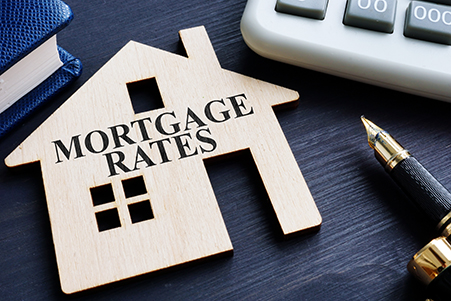In simplest terms, the difference between a fixed-rate and an adjustable-rate mortgage is just that – a rate that doesn’t change versus a rate that can change. Fixed-rate mortgages have a locked-in interest rate that won’t change, no matter if rates go up or down. With an adjustable-rate mortgage (ARM), the rate may fluctuate, up or down. While there are numerous varieties of mortgage loans within these two categories, a crucial first step when you begin shopping is having a solid understanding of these two main loan types.
Fixed-Rate Mortgages
A fixed-rate mortgage originates with a locked-in interest rate that remains unchanged throughout the life of the loan. Although the amount of interest paid each month will vary from payment to payment, the total payment remains the same, which makes budgeting an easier task for homeowners.
The convenience of budgeting toward a consistent total payment isn’t the only benefit of a fixed-rate loan: the borrower is also protected from sudden increases in monthly mortgage payments if interest rates rise – another tremendous positive associated with this type of mortgage. We should note however that there is a potential downside to fixed-rate loans, in that when interest rates are high, qualifying for a loan is more difficult for buyers, as the payments are less affordable.
When the rate of interest on your loan is fixed, the total amount of interest you’ll pay depends on the mortgage term. Typically your mortgage lender will offer a variety of fixed-rate mortgages for different terms, the most common being 30 and 15 years.
Adjustable-Rate Mortgages (ARM)
Unlike the situation involved with fixed-rate loans, interest rates for an adjustable-rate mortgage are a little more fluid. Many ARMs will start at a lower interest rate than fixed-rate mortgages, and that initial rate may stay the same for months, a year, or many years. But when the introductory period is over, your interest rate will inevitably change, and the amount of your payment will most likely go up. Before you take out an adjustable-rate mortgage, determine the following:
- How high your interest rate and monthly payments can go with each adjustment
- How soon or at what point your payment could go up
- How frequently your interest rate will adjust
- If there is a limit on how high your interest rate could go
Our advice? Don’t go with an ARM simply because you assume you’ll be able to sell your home or refinance your loan before the rate changes. You may get a similar rate at the time of reset, but it can be a gamble: the value of your property could decline, or your financial situation could change. If you can't afford the higher payments of an ARM, you may want to consider a fixed-rate loan.
Regardless of the loan type you select, choosing carefully with your trusted mortgage lender will help you avoid costly mistakes. Guardian Mortgage’s team of professionals are here to help guide you through the facts, help you weigh the options, and determine which of these two main types of loans is the best fit for you.

